Led by PL Udaya Kumar, the team at the Mythic Society is on a mission to digitally conserve Bengaluru's ancient inscriptions for future generations.

Bengaluru Inscriptions 3D Digitisation Conservation Project has been on for three years now. (Supplied)
History isn’t always about the kings and queens. Learning it shouldn’t be only about memorising the names of rulers and the year in which a certain war was fought. Most of us who have learned history in school would be familiar with dynasties and rulers across the world. But ask someone about the history of their native place and most likely, the answer would be ‘there’s nothing there’.
But that is far from the truth. It’s just that we don’t know about it, says PL Udaya Kumar, who is the honorary project director of Mythic Society’s Bengaluru Inscriptions 3D Digitisation Conservation Project.
“History has to be local. When one starts schooling, the story of your own native place is what they should start with. Then you proceed to a larger area to understand the history outside. Then you learn about the kings and queens of the world. That way, we will be well-rooted. Otherwise, you might end up thinking you come from a place with no history,” he shares.
It is this vision that inspired the mechanical engineer to take up this project – to learn more about the history of Bengaluru and share the findings.
The project covers three districts – Bengaluru Rural, Bengaluru Urban and Ramanagara. Over the past three years, the team has been doing fieldwork across the three regions, tracing down inscriptions and digitising them. They have tracked down over 1500 of them and digitised over 600.
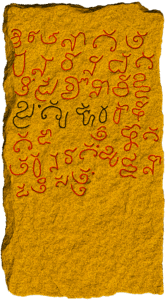
The Beguru Bengaluru 900CE Kannada Inscription. (Mythic Society)
“There are inscriptions dotting across the city. A lot of them are untraceable, some have been destroyed. When we track them down, we are able to identify what went down at a place hundreds of years ago. The name of the place, of the people, what was built there,” shares Kumar, adding that most people are apathetic towards it.
When a piece of stone sits at a vacant plot of land with writing on it that is illegible, people tend to ignore it. Some even break it and use it for construction.
“People are ignorant and indifferent. Instead of finding out what it is, you look at it as a piece of stone that could save them some money,” Kumar points out.
To prevent this, the team has been traveling from place to place identifying these stones. While historians have been tracking and documenting these inscriptions for over hundred years, Kumar’s team is revisiting the sites to ensure physical protection and digital conservation.
“In case the stone has fallen down or is half buried, we set it upright. More importantly, we make high resolution models of it. These are going to flake and wither naturally over hundreds of years. So we make high-resolution digital copies so that in the eventuality that goes away, we have a good copy of that. That’s the core objective.”
In the process, the team also decipher the information written on it. Often they contain troves of information about the people who lived there. The subject matter of the stones varies from records of battles, building of lakes, villages and temples, trade records, grants and tax waivers.
After the copies are made, they share them with the archeology department and also with anyone who is interested.
Back in 2017, Kumar, who lived in Rajaji Nagar learnt about the existence of a 13th-century inscription stone in his area. While he was keen to track it down, nobody knew of the stone’s existence, let alone where it was.
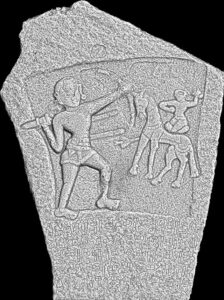
Digitally Produced Image Of Hebbala Kittayya 750CE Stone Inscription At Hebbala. (Supplied)
It led him to discover that of the 1,500 inscription stones in and around Bengaluru, about 40% have been destroyed in urban areas and 30% are not traceable in rural areas. That inspired his journey looking for ancient inscription stones scattered across the city. He realised that these are artifacts that could help people understand the geopolitical history of the city.
“I wanted to do something to save them. Back then, I was working as a citizen activist. That’s when the Mythic Society stepped in and showed interest in funding the project. So I took a sabbatical from my corporate job and started doing this,” he shares.
The project is still a couple of years away from completion. There is an extraordinary amount of granular information about each and every place available on these inscriptions.
Kumar shares, “Every locality of the city has an incredible story to tell about its own heritage. Realising that certain areas of Bengaluru are over 1,000 years old was a big revelation.”
There have been some fascinating insights that were gathered from this project.
Pointing at the map displayed in his office, Kumar tells South First, “Each colour in the map indicates that particular area’s time period. We know that because of the stone from there in which the name of the place is mentioned. About 40 odd localities of Bengaluru date back to 1,000 years or more. There are over 30-40 lakes that are that old. None of us knew before that there were 1,000-year old lakes in Bengaluru.”
“Mangalapura” the ancient name for Mangaluru on an inscription
The Mythic Society Bengaluru Inscriptions 3D Digital Conservation team recently 3D scanned and digitally conserved a few inscriptions at the Rashtrakavi Govinda Pai Research Center at MGM College, Udupi.
1 of 3 pic.twitter.com/C7uBh5HJr6— Mythic Society (@MythicSociety) January 26, 2024
People love Bengaluru for its cosmopolitan nature. But not many know it’s in the very fabric of the city from hundreds of years ago.
“Native Bengalureans spoke 4-5 languages at home including Tamil, Kannada and Telugu. Everyone who lived here inevitably learned multiple languages which made them less fanatic about just one language. The multilingual nature of the city has got nothing to do with the migrants here. For years, Bengalureans have identified themselves with at least three other South Indian languages,” Kumar informs.
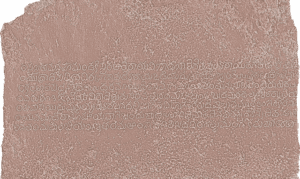
Digital Image Obtained by 3D Scanning of The malur pattana 1432CE mayitammaʼs herostone with Inscription̤. (Supplied)
While most of the inscriptions are in Kannada, one third of them are in Tamil and some in Telugu, proving the same.
“Cosmopolitanism has been an integral part of the fabric of the city. When you already have 3-4 languages at home, a few more doesn’t mean much. People can easily come and fit in here,” he adds.
The case is the same with religions. Many of the stones have writings that prove that Bengaluru was never monolithic and people of different religions coexisted peacefully.
As a part of the project, Kumar and team are releasing a map of hero stones across Bengaluru.
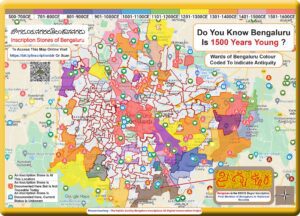
Map showing inscription stones across Bengaluru. (Twitter/ @Inscriptionblr)
Called Veera-gallu locally, these stones commemorate the death of people who made significant contributions to society, or died as martyrs defending their villages. They not only record the stories, but also the evolution of the written scripts, over time.
“The online map will show you where all these hero stones are located. There are lots of them around. Some carry writings which give us the names and details. We publish this online so that anyone sitting anywhere would be able to view it. Everyone’s free to access it. With a click of a button you can know who it was, the life period, reason for death, and such,” he shares.
“From an execution perspective, the tech part has been the challenge. I come from a tech background but people who work with me don’t. Training them and making them familiar with the tools have been a challenge. It’s been a steep learning curve for them as well,” Kumar shares.
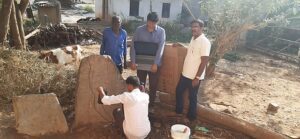
3D scanning of the Nerige Inscriptions. (Mythic Society Inscriptions 3D Digital Conservation team)
However, the biggest disappointment has been the inability to spread information across.
“A project like this should be happening across the country today. But it isn’t. We have made efforts to spread the message. Ten years from now, this could be happening everywhere by which time another 30% of these stones would have been lost. Adopting quick methods to doing projects at this scale is important. Otherwise you lose a lot. Every minute, some heritage is being lost.”
After the completion of this project, the plan is to replicate it in more places.
“What we have with us is an incredible sample of information. There are students who are working on Wikipedia articles on the inscriptions. There’s someone developing software around it. Some are developing fonts based on the inscriptions. There is a lot going on. But mainly, we are doing a lot of workshops in universities and institutions to create awareness. We do talks and awareness-building activities in the hope that we trigger interest in people to do something similar elsewhere,” he adds.
Kumar and team use a digital scanner that has over six cameras to scan the stones. It is then connected to a computer to produce a three-dimensional image, which is processed and stitched together by the team. It is then enhanced so that the inscriptions become sharper and easier to read.
“The technology that we use is something that’s much needed in the field. “Here, our project area is over 8,000 sq km, which is bigger than some countries. Different digital tools such as mobile apps and software allow us to work efficiently and effectively,” he shares.
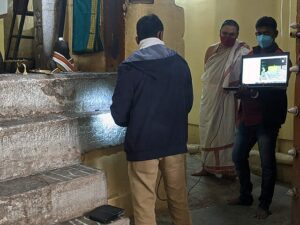
3D Digital Scanning of the Basavanagudi Vrishabhavathi River Peeta Inscription by the Mythic Society Bengaluru Inscriptions 3D Digital Conservation team. (Supplied)
While Bengaluru is considered the tech capital, people who work in history and heritage fields still don’t leverage any technology, he points out.
“As a sector, they have to catch up to the new ways of thinking, working and communicating their findings. In every field this technology update has happened except in the field of history. That plays into the way they research. When you are stuck with doing things a certain way, you would be doing the same thing again and again,” he details.
The field of history should come out of its cocoon, he further adds. “There are historians who think this is an esoteric field that doesn’t interest the common man. In my experience, it’s been the opposite. Everyone wants to know their history.”
People’s demand to learn more about their history is huge and unmet.
“When we announce a talk on a certain topic, we see a massive crowd of ordinary citizens who want to learn the story of their city. What is not taught in books at all is what people are dying to learn. There is so much that is known but so little that is formally communicated or taught,” he signs off.

Jul 26, 2024

Jul 21, 2024

Jul 20, 2024

Jul 20, 2024

Jul 19, 2024

Jul 18, 2024